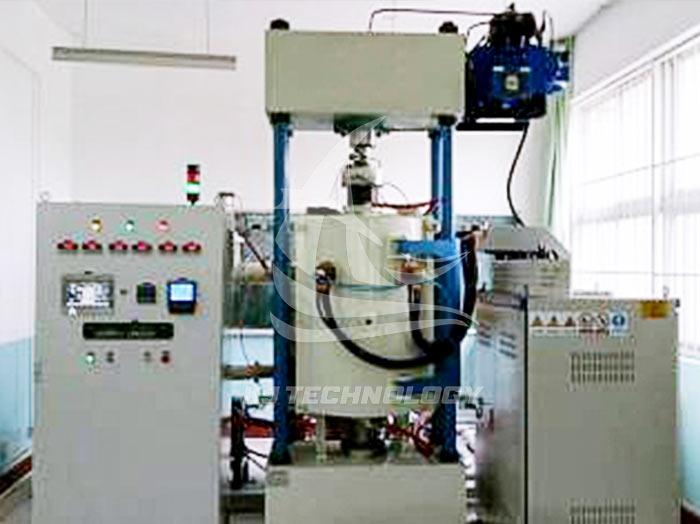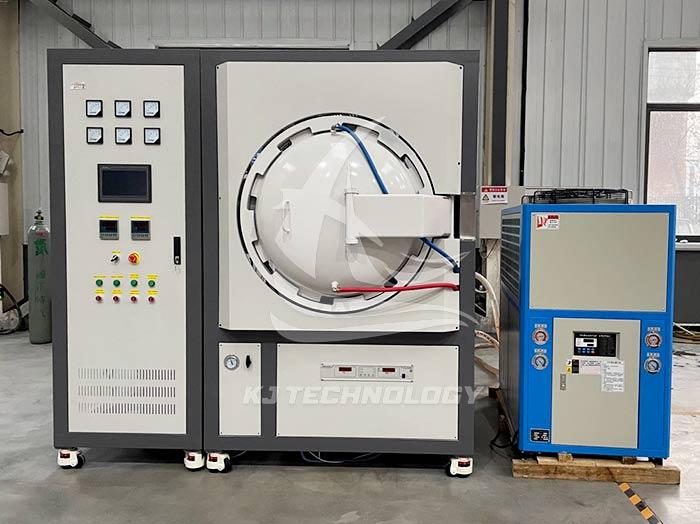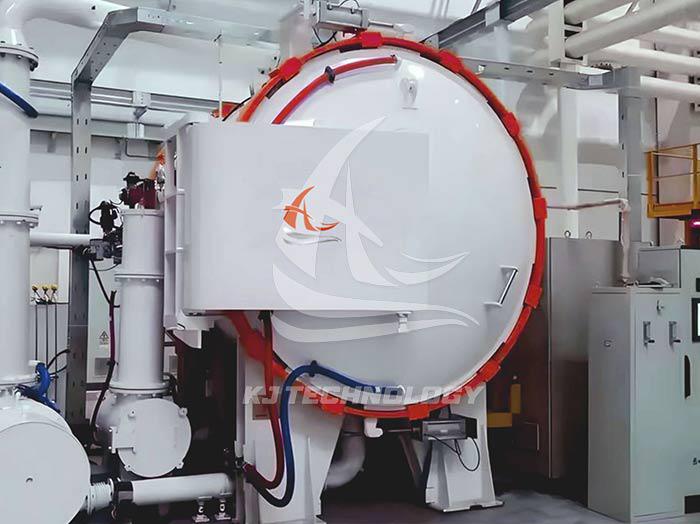Can industrial large-scale vacuum furnaces be used for sintering?
 11-14-2025 Author: KJ technology
11-14-2025 Author: KJ technology
Industrial large-scale vacuum furnaces can be fully used for sintering processes and have significant advantages in improving material properties, ensuring purity, and achieving precision control. The following is a specific analysis:
1. Technical principle: Sintering realization under vacuum environment
The vacuum furnace completes the sintering process through the following steps:
Vacuum loading: Place powdered or granular materials in a vacuum furnace, evacuate to the target vacuum degree (usually ≤ 10 ⁻ ² Pa), isolate oxygen from other gases, and avoid oxidation reactions.
Heating stage: The material is slowly heated to the sintering temperature through methods such as resistance heating, induction heating, or electron beam heating (e.g. ceramic materials require 1600-1800 ℃, hard alloys require 1400-1500 ℃).
Insulation stage: Maintain a certain amount of time at the target temperature to form a strong bond between powder particles through diffusion, flow, and other mechanisms, achieving densification.
Cooling stage: Select the cooling method according to the process requirements (such as furnace cooling, controlled cooling, or rapid cooling) to obtain the required structure and properties.
Key point: The vacuum environment completely isolates oxygen, avoiding surface oxidation or impurity contamination of materials. At the same time, precise temperature and atmosphere control are used to achieve precise control of material properties.
2. Process advantage: The core value of vacuum sintering
High purity of materials
Vacuum environment avoids oxidation and reduces the introduction of impurities, especially suitable for the preparation of high-purity materials such as semiconductors and optical ceramics.
Case: After vacuum sintering of laser ceramics, the relative density reaches 99.98%, achieving high transparency and laser output performance.
Excellent densification effect
In a vacuum environment, adsorbed gases on the surface of the material are eliminated, resulting in a decrease in porosity and an increase in density. For example, after vacuum sintering, the density of hard alloy can reach over 99%, and the hardness and wear resistance are significantly improved.
Good organizational uniformity
During the vacuum heating and cooling process, the temperature distribution is more uniform to avoid uneven organization caused by local overheating or undercooling. For example, after vacuum sintering, the grain size of titanium alloy is fine and uniform, and the mechanical properties are improved.
High process flexibility
It can be combined with other processes (such as hot pressing, hot isostatic pressing) to form a composite sintering process that meets complex performance requirements. For example, after vacuum sintering of metal ceramic composite materials, the toughness of the metal is combined with the high temperature resistance of the ceramic.
Environmental Protection and Energy Conservation
Vacuum sintering reduces gas emissions and meets environmental requirements; At the same time, it has low heat loss and high energy utilization efficiency.
3. Application scenario: Typical field of vacuum sintering
powder metallurgy
Used for preparing high-density, high-performance metal parts (such as hard alloy cutting tools, molds). For example, after vacuum sintering, the mechanical properties and wear resistance of tungsten alloy are significantly improved.
ceramic materials
Processing high-performance ceramics (such as piezoelectric ceramics, ferroelectric ceramics, high-temperature superconducting ceramics) to avoid volatilization of elements such as lead and bismuth, ensuring stable electrical properties. For example, after vacuum sintering of piezoelectric ceramics, the loss of electrical properties is reduced.
Combining the advantages of metals and ceramics, prepare composite materials that are resistant to high temperatures, corrosion, and high strength. For example, after vacuum sintering, the bonding strength of SiC fiber-reinforced SiC based composite materials is improved.
Special metal materials
Handle active metals (such as titanium, zirconium) or high melting point metals (such as tungsten, molybdenum) to avoid oxidation and impurity contamination. For example, after vacuum sintering, the fatigue life of titanium alloy is improved.
Semiconductor and Electronics Industry
Used for annealing and curing semiconductor chips and electronic components to improve electrical performance and durability. For example, after vacuum packaging of integrated circuits, reliability is improved.








